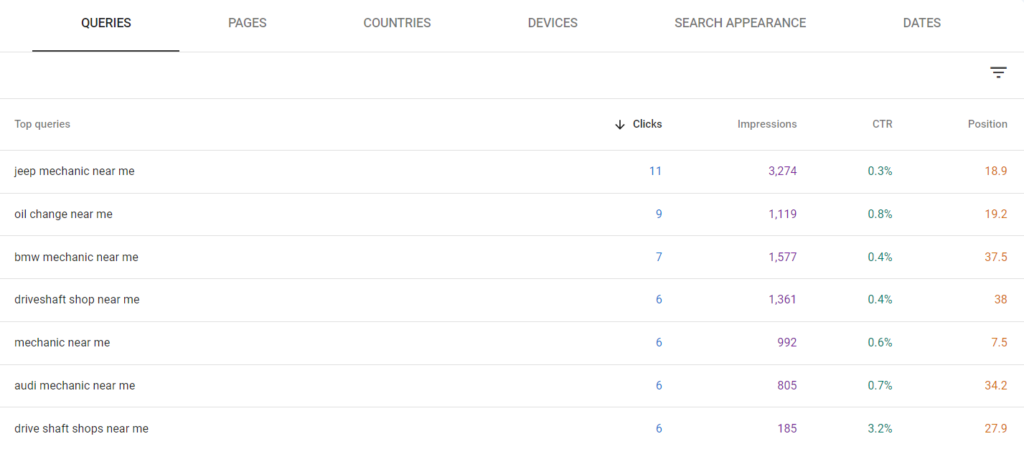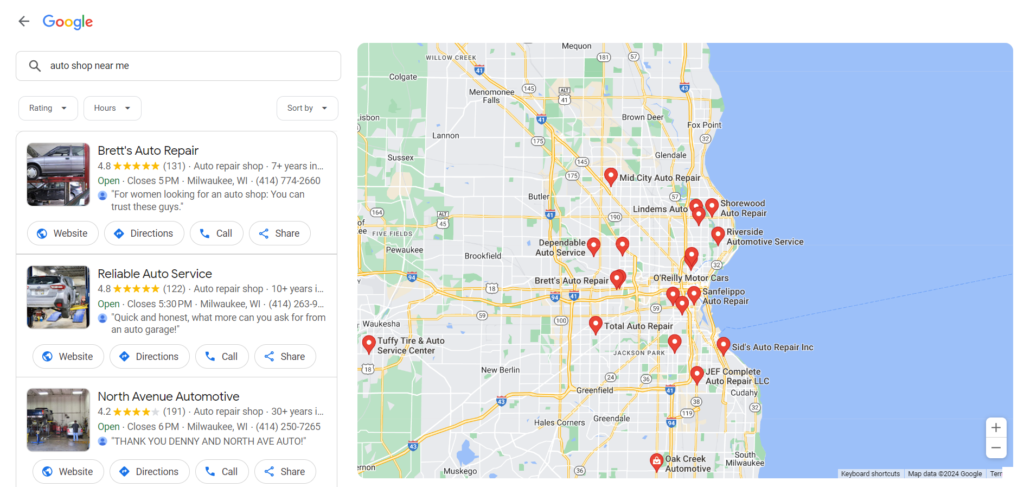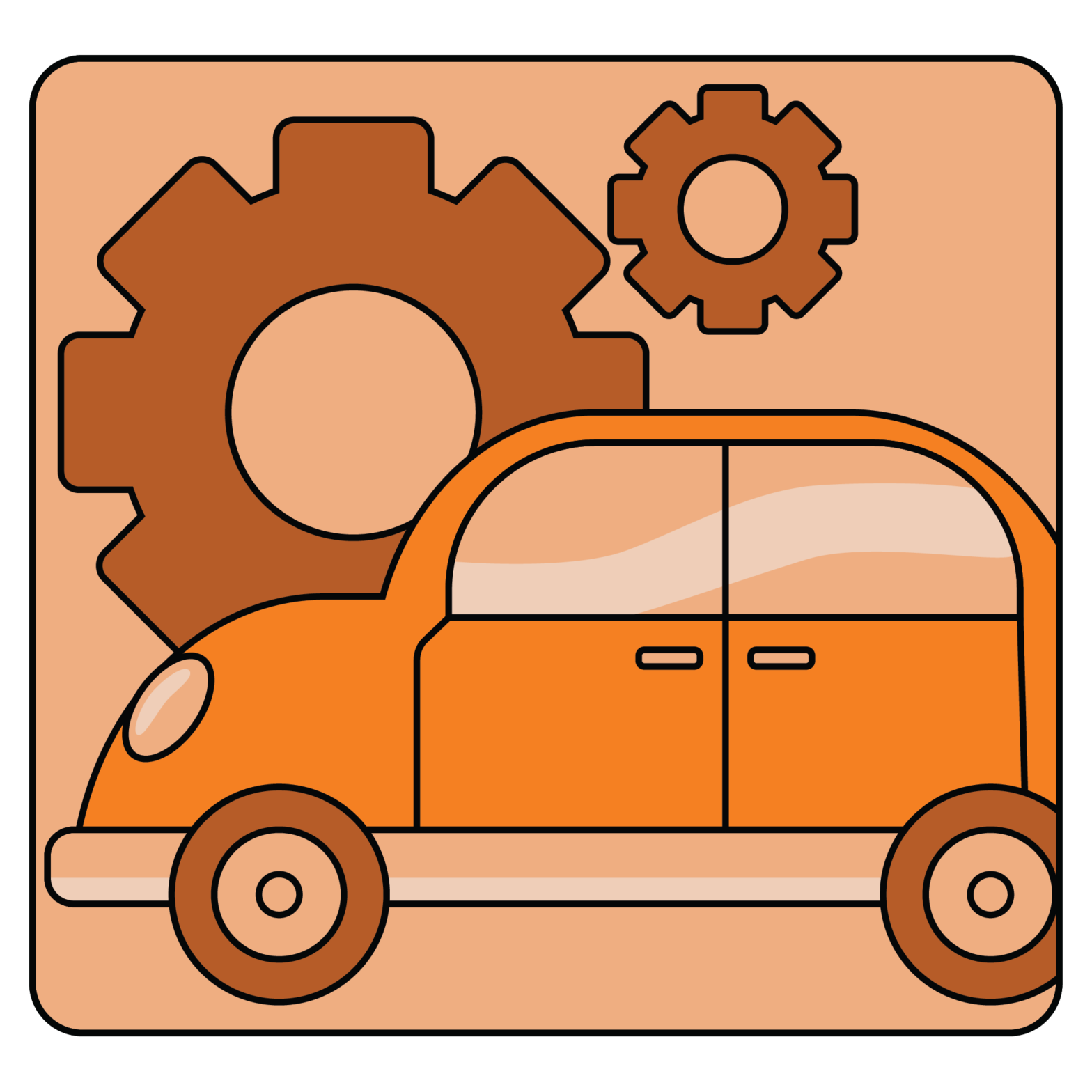A Mechanic’s Guide to Ranking on Google
In today’s digital landscape, having a strong online presence is crucial for the success of any auto shop. Search Engine Optimization (SEO) is the key to ensuring that potential customers can easily find your services when they search online.
As an SEO agency, we have decades of experience running local SEO campaigns, and we’ve managed several successful accounts for auto shops in the Midwest. While every shop is different, there are some general principles that you can follow to boost your rankings and grow your revenue.
So we put together a step-by-step guide of the strategy that we implemented for these shops.
Measuring Your Success: How to Set up Tracking
While it’s possible to optimize your site and improve your SEO without tracking your performance, it’s important to know what’s working and what isn’t so you can adjust your strategy.
We recommend setting up three free-to-use tools to measure your progress:
In order to link your site to these tools, you will need to insert a snippet of code. Most web builder platforms like Wix, Kukui, etc., make this super easy.
Step 1: Link your site with Google Analytics.
Google Analytics provides data about the activity that occurs on your website. This includes your web traffic, where users are coming from (e.g. organic search, paid search, email campaigns, etc.), and their behavior on-site.

You’re also able to track custom conversions or key events, like when a user schedules an appointment or signs up for a rewards program.
Get started with your Analytics set up here.
Step 2: Link your site with Google Search Console.
Google Search Console tracks how your website is ranking on Google. It provides data on the search queries you’re ranking for and can be broken down by page, country, device type and more.

Get started with your Search Console set up here.
Step 3: Link Your Site with Google Tag Manager
Finally, Google Tag Manager is great for setting up custom events such as form submissions, clicks to particular links, and more.
This tool is a bit more advanced and will require some time to get the hang of.
There are a ton of great resources out there for learning the ins and outs of Google’s tools and how they all work together. Analytics Mania is one of them, and he has a Tag Manager tutorial for beginners.
Get started with your Tag Manager set up here.
Google Business Profile
Step 4: Complete Your Business Profile
Google Business Profile is the cornerstone of any local SEO strategy. For our primary auto shop client, about 30%–40% of their organic traffic comes from their Google Business Profile.

If you do nothing else for search marketing, complete your Google Business Profile!
And check out our complete guide to setting up Google Business Profile!
Step 5: Remain Active of GBP
But your Google Business Profile isn’t a “set it and forget it” kind of tool. Once your profile is set up, it’s important to remain active.
Activity such as updating holiday hours, uploading photos, creating posts for deals and promotions, and responding to user reviews has been shown to impact your GBP rankings.
Positive user reviews are also a huge influence on click-through rates and, ultimately whether or not a user decides to schedule an appointment. Be sure to follow up with customers in an email and ask them to share their experience. Don’t forget to include a link to make it as easy as possible.
Know Your Keywords
Step 6: Write a List of Your Target Keywords
Generally, auto shops are going to target the same cluster of keywords. This may change between shops depending on the services you offer or areas you specialize in.
But generally speaking, we can break down our keywords into three categories based on how users search for mechanic services.
| Head terms | Terms by vehicle | Terms by service |
| mechanics mechanics near me auto shops auto shops near me | bmw repair shop honda mechanic near me chrysler service near me jeep repair specialist | brake service oil change near me wheel alignment near me driveshaft repair |
Step 7: Map Your Keywords
For SEO, we typically map a keyword (or keyword topic) to one landing page.
For instance, your homepage will usually be mapped to the most frequently searched and broadly applicable terms (head terms). So the content of your homepage will be optimized to target terms like mechanics and auto shop. We’ll discuss this more in the next step.
The secondary terms (the terms by vehicle and service) will need separate landing pages in order to target effectively. We typically recommend that our auto shop clients build a landing page for each service they offer and for the most popular brands of vehicles they service.
Website Optimization
Step 8: Optimized Your Homepage
Your homepage is critical for both users and search engines. It sets the tone for your website and helps users understand what you do and how you can help them.
Your primary terms will likely include “auto repair,” “auto shops,” or “mechanics near me.” These are the keywords your homepage will target.
It’s also beneficial to add localization to your keywords. If your shop is in Jacksonville, then we’d include “Jacksonville Auto Repair” as a keyword.
Title Tags
The title tag is the main title of your webpage that appears in search engine results. Make sure it includes your target keywords and is under 60 characters.
For example: Auto Repair Shop in Jacksonville | Jax Automotive Service
Header Tags
Use effective headers that incorporate relevant keywords. For instance, your H1 (the main header) should be something like “The Premier Jacksonville Auto Repair Shop.”
Your other header tags (H2s, H3s…) don’t necessarily need keywords. However, they should be relevant to the page topic.
If you were to look at the header tags in isolation, you should be able to tell they were taken from an auto shop website (i.e. “We’ll Get You Back On The Road In No Time!”)
Body Content
Write informative paragraphs that communicate what your business is and who you serve. Including strong sentences like: “Jax Automotive Service is a proud Jacksonville mechanic serving drivers from across the county!”
Best practices recommend page content to be at least 300 words. This gives search engines enough “meat” to decipher what the page is about and who it’s best for.
Call to Action
Make sure you have a clear call to action.
Prefer your customers call to schedule an appointment? A prominent phone number on your page or header is key.
Have an online appointment scheduler instead? Make sure the form is clearly present on the page or obvious buttons that link to the form page.
Step 9: Create (or Optimize) Your Secondary Landing Pages
Secondary landing pages target search queries with lower volume like your vehicle or service terms.
While search queries like “auto shop” or “mechanic near me” are going to be your primary focus, it’s still important to have content that will pick up those less frequently searched terms like “mercedes mechanics”
The same principles apply to these pages just as they did for your homepage. Think about title tags, header tags, body content and call to actions.
Step 10: Blog articles
Regularly publishing blog articles is a great way to supplement your SEO efforts. Writing about common car problems, seasonal maintenance tips, or even featuring customer testimonials can signal to search engines that you are an expert authority that users can trust.
Blog content also keeps users engaged, leading to longer visits and higher interaction rates—signals that search engines use to gauge a site’s quality and relevance.
Plus, well-written articles can generate backlinks. Other website may link to your article which increases your site’s authority and improves its ranking on search engine results pages.
The Potential Numbers
As mentioned, we’ve implemented this strategy in the past with great success.
To give you an idea of one potential outcome, here’s a breakdown of where traffic comes from after a few years of implementation and refining.
Most of our business traffic (meaning non-blog traffic since blog traffic typically doesn’t convert into customers) comes through the Google Business Profile, which is why it’s such an important piece of the SEO puzzle.
Google Business Profile traffic is followed by organic traffic to the homepage; this is traffic that clicks through to our site via the blue links instead of the GBP.
Following the homepage, our Service and Vehicle pages collectively make up about a quarter of our business traffic. While it’s a smaller piece of the pie, it’s definitely not something to ignore.
Wrapping Up
Optimizing your auto shop’s online presence involves a multifaceted approach that includes understanding your target keywords, effectively mapping these keywords to specific landing pages, and ensuring that your homepage and secondary pages are optimized for search engines.
By focusing on strong SEO practices, regularly updating your blog with relevant content, and engaging with customers on social media, you can significantly enhance your visibility and attract more potential customers.
Remember, consistency and continuous improvement are key to maintaining a strong online presence and achieving long-term success.
If you’re interested in learning more about how we can help improve your search visibility, check out our auto shop SEO services!
